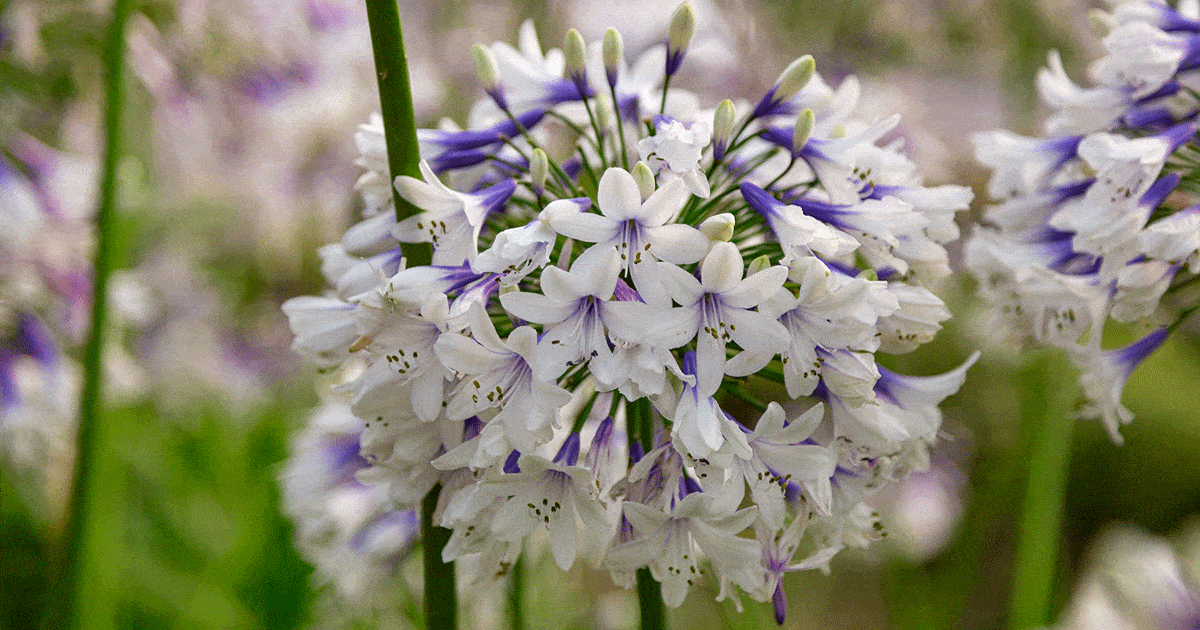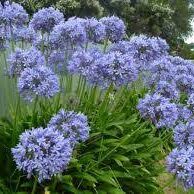Understanding the Art of Agapanthus Care: Vital Actions for Healthy And Balanced Development and Vibrant Blooms
In the realm of horticulture, the farming of agapanthus stands as a rewarding undertaking for those who seek to nurture these classy flowering plants. From choosing the ideal variety to grasping pruning strategies, the journey in the direction of growing thriving agapanthus plants is multifaceted and holds the crucial to opening the complete potential of these organic treasures.

Choosing the Right Agapanthus Variety

When choosing the right Agapanthus selection for your yard, think about variables such as climate viability, blossom shade, and growth routine. Furthermore, think about the environment in your region to ensure the Agapanthus range you select can prosper in your certain problems. Comprehending the growth behavior of various Agapanthus selections is critical for correct positioning within your garden.
Ideal Planting Conditions
Taking into consideration the optimal environmental requirements is necessary for effective Agapanthus farming. Agapanthus plants are sensitive to cold temperature levels and should be protected from frost throughout winter months.
To guarantee healthy development and dynamic blossoms, plant Agapanthus bulbs at a deepness of regarding 2-4 inches and space them 8-12 inches apart. Adding raw material, such as garden compost, to the soil can boost water drainage and fertility, advertising durable root development. Mulching around the base of the plants aids maintain wetness and subdues weed growth. Normal watering is important, especially during the growing period, to maintain the dirt constantly damp however not soaked.
Watering and Fertilizing Tips
Maintaining proper moisture degrees and providing essential nutrients are key aspects in the treatment regimen for Agapanthus plants. When it concerns watering Agapanthus, it is crucial to strike an equilibrium. If overwatered, these plants like continually wet soil yet are vulnerable to root rot. During the growing period, water deeply when a week, making sure the soil is well-draining to stop waterlogging. In hotter climates or during durations of dry spell, even more regular watering might be required to keep the soil uniformly moist. Nonetheless, decrease watering in the winter to stop water logged conditions.
Fertilizing Agapanthus is essential for advertising healthy development and prolific blossoms. Apply a balanced plant food, such as a 10-10-10 formula, in the very early spring as new development arises. Repeat this application every 6-8 weeks throughout the growing period. Avoid too much fertilizing, as it can cause rich foliage at the expense of blossoms. Always adhere to the maker's instructions for appropriate dilution and application approaches. By adhering to these watering and fertilizing tips, you can guarantee your Agapanthus plants thrive and create lively, long-lasting flowers.
Trimming Methods for Agapanthus
Pruning Agapanthus plants at the appropriate times and with appropriate strategies is vital for keeping their wellness and promoting ideal growth and flowering. The ideal time to prune Agapanthus is in late winter months or early spring prior to brand-new development arises.
Deadheading spent flowers can likewise reroute the plant's energy into generating more blooms instead than setting seeds. If you desire to collect seeds for proliferation, leave some blossoms to dry and fully grown on the plant.
Bear in mind to make use of tidy, sharp tools to make accurate cuts and decrease the danger of introducing illness. Agapanthus. Normal trimming will help keep your Agapanthus looking healthy and balanced and cool while guaranteeing an abundant screen of gorgeous blooms
Handling Usual Pests and Illness
After making sure proper trimming strategies for Agapanthus, it is crucial to attend to usual insects and conditions that can impact the wellness and vigor of these plants. One common bug that affects Agapanthus is the Agapanthus gall midge.
Additionally, have a peek at these guys Agapanthus plants can endure from origin rot if they are planted in poorly draining soil. By being attentive and taking punctual activity versus parasites and illness, you can aid your Agapanthus plants thrive and generate vivid flowers. Agapanthus.

Final Thought
To conclude, mastering the art of agapanthus care involves selecting the best range, providing perfect growing conditions, correct watering and fertilizing, suitable pruning strategies, and attending to usual bugs and diseases. By adhering to these important steps, you can make certain healthy and balanced development and vibrant flowers for your agapanthus plants. Keep in mind to frequently monitor and preserve your plants to promote their total wellness and long life.
To make sure healthy development and vivid flowers, plant Agapanthus light bulbs at a deepness of concerning 2-4 inches and space them 8-12 inches apart. By complying with these watering and fertilizing tips, you can ensure read the article your Agapanthus plants flourish and generate dynamic, durable flowers.
One typical insect that click site affects Agapanthus is the Agapanthus gall midge. In addition, Agapanthus plants can suffer from origin rot if they are grown in badly draining dirt. By adhering to these vital actions, you can guarantee healthy growth and lively blooms for your agapanthus plants.